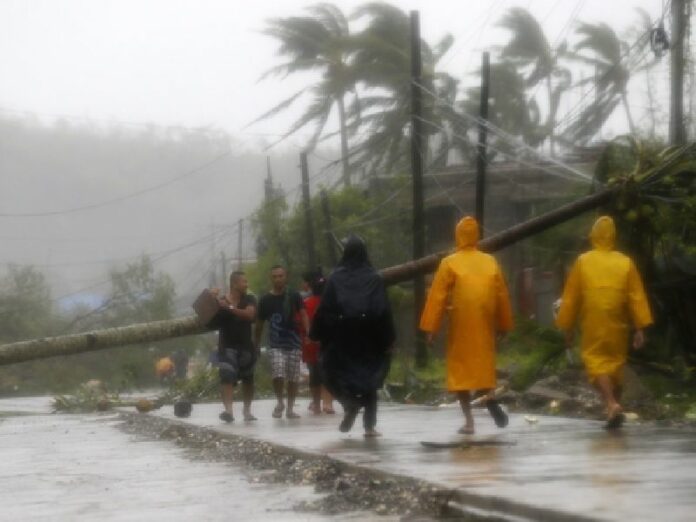
MANILA (DPA) – At least four people were killed and millions left in darkness in the Philippines as typhoon Hagupit knocked out electric power and flattened homes, officials said Sunday.
Two people were also injured as Hagupit slammed into the coastal town of Dolores in Eastern Samar province on Saturday evening, bringing heavy rains and howling winds.
"The typhoon is still battering other parts of the country, but so far it brought mainly damage to property," said Alexander Pama, head of the national disaster risk management council.
"We hope it will not cause more destruction," he added.
Hagupit weakened after making its second landfall over the coastal town of Cataingan in the central province of Masbate, and was packing maximum winds of 140 kilometres per hour (kph) and gusts of up to 170 kph, the weather bureau said.
A 65-year-old man and a 1-year-old girl died from hypothermia, while a 35-year-old woman died from complications while giving birth at a relative's house in the nearby province of Iloilo, the provincial disaster risk management office said.
In Northern Samar province, a 75-year-old woman drowned in Catarman town, a municipal disaster risk management officer said.
In Negros Oriental province, two people were injured when their tricycle was struck by a falling tree, the local civil defence office said.
More than 1 million people fled their homes and sought shelter in churches, schools and public gymnasiums in 30 provinces, the national disaster risk management council and local officials said.
Thousands more were stranded after air and sea travel were suspended. Philippine carriers announced more than 100 additional flight cancellations for Monday.
The typhoon was expected to slowly grind through the central provinces before exiting the Philippines on Wednesday, raising concerns over flooding in the affected areas, including Manila, a metropolis of 12 million people.
Pama said authorities were focused on clearing operations in areas where the typhoon has passed by, toppling trees and electric posts that blocked roads. Rooftops were also torn off and some flooding was also reported.
"The concentration now is to clear avenues to deliver the needed relief supplies and other materials," he said. "Help will arrive if not today, but in the coming days."
In Tacloban City, which was still recovering from last year's super typhoon Haiyan, newly rebuilt homes were destroyed and makeshift shelters made from light materials were torn apart by Hagupit's winds.
Debris of wood and galvanized iron sheets from a slum community near the public market littered the streets, while some newly installed electric posts were again toppled.
"So far there are no reports of casualties," Tacloban City Mayor Alfred Romualdez said. "There is some flooding in the downtown area, but it looks like the worst is over for us."
Hagupit was moving towards the eastern region of Bicol, where officials expressed worry about possible mudslides from two active volcanoes in the provinces of Albay and Sorsogon.
"My biggest worry is the flooding as the typhoon seems to be hovering and moving very slowly," Albay Governor Joey Salceda said in a television interview. "There could also be mudslides from the upper slopes of Mayon Volcano."
In 2006, more than 1,200 people were killed when heavy rains brought about by a typhoon triggered raging mudflows of volcanic debris and boulders that buried villages in Albay.
Hagupit was the strongest typhoon to have hit the Philippines since Haiyan devastated central and eastern provinces last year, leaving more than 7,300 people dead or missing and displacing over 4 million people.
For comments, or corrections to this article please contact: [email protected]
You can also find Khaosod English on Twitter and Facebook
http://twitter.com/KhaosodEnglish
http://www.facebook.com/KhaosodEnglish










































